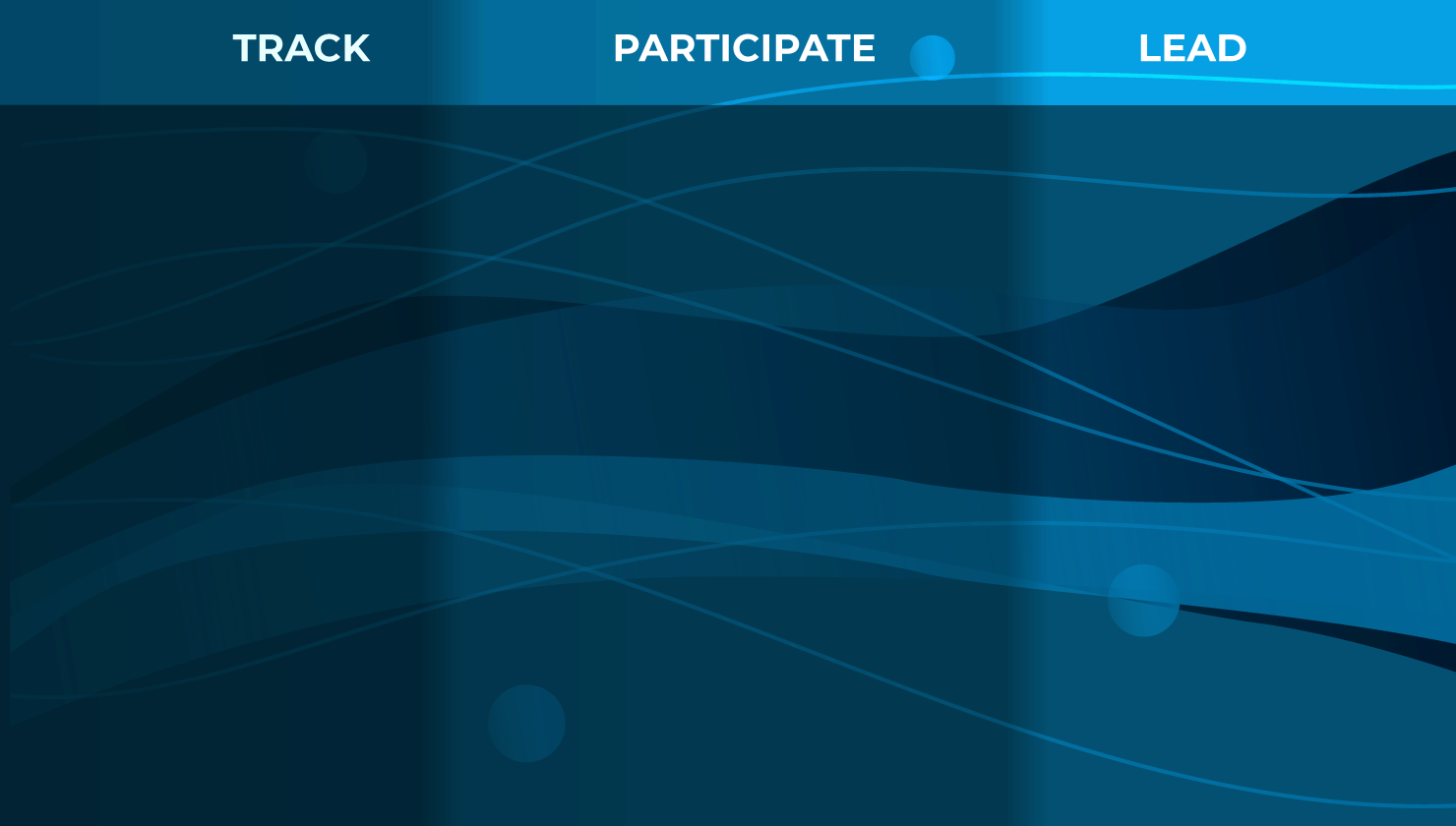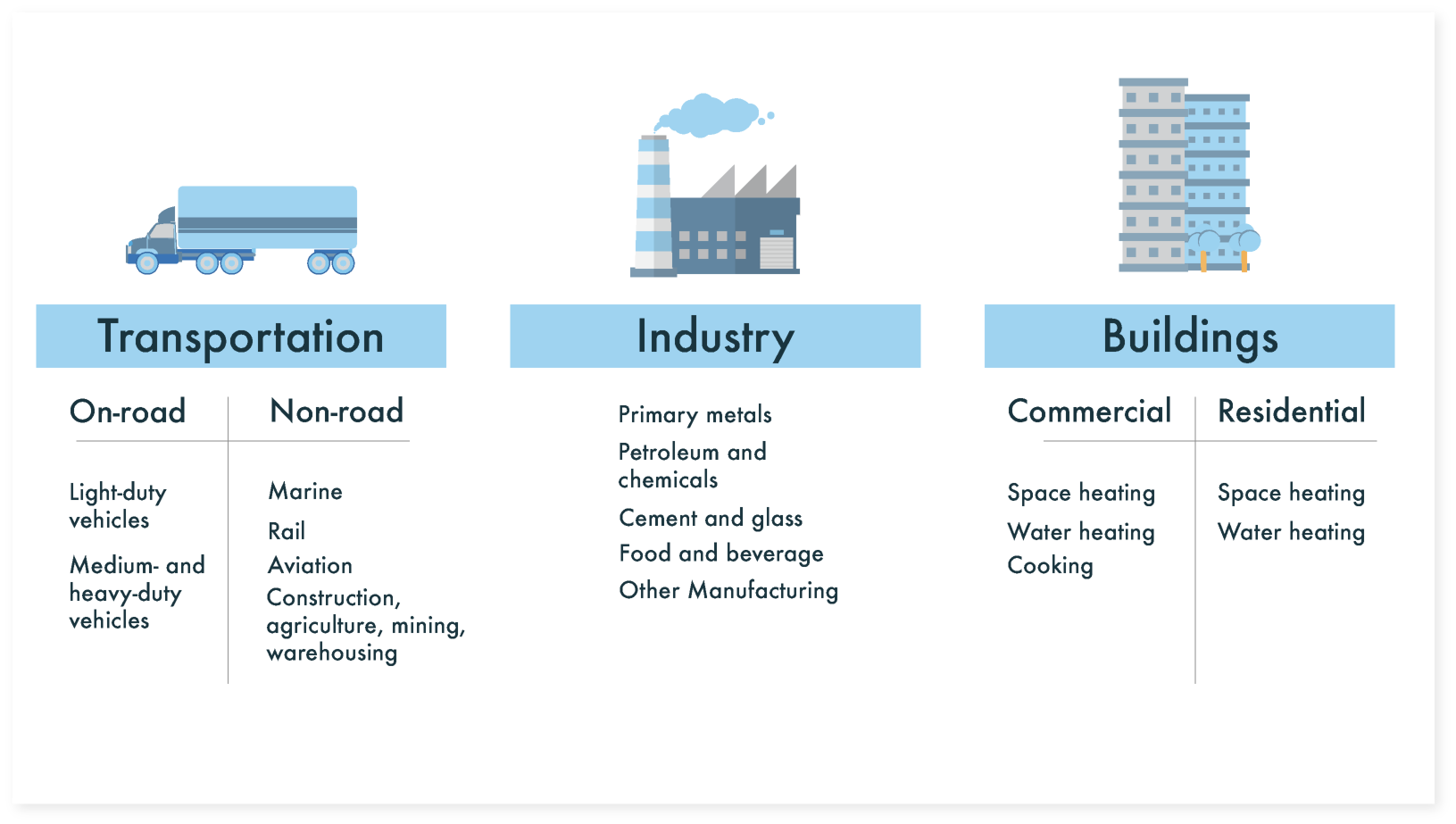# LCRI Research, Development, and Demonstration Vision

The LCRI and its supporting organizations recognize that additional resources are required to be able to achieve net zero emissions across diverse economic sectors and that significant additional research and innovation are required to accelerate the commercialization of AECs. For that reason, LCRI has developed a research vision that includes a portfolio organized around the value chain of these resources, including their production, storage and delivery, and end use applications, and also addresses integration of energy systems and safety and environmental aspects.
# Production
# Renewable Fuels
LCRI is focused on solid and waste renewable biogenic feedstocks and pursues research related to the potential production of AECs. To frame its research, LCRI has defined the following objectives for the research plan:
Determine the potential role of renewable fuels and bioenergy to contribute to deep decarbonization across the energy economy by mid-century.
Identify opportunities, constraints, and risks (for example, research, development and demonstration activities, policy impacts, market impacts) for facilitating increased renewable fuels and bioenergy utilization in a low-carbon future.
Pursue research and demonstrations to support key renewable fuels and bioenergy technologies.
To address those objectives and guide the research, key research questions include:
What role could renewable fuels and bioenergy play in the broader energy system and what are the options for integration?
What types and quantities of renewable fuel and bioenergy feedstock supplies are available and what are the potential implications (environmental, social, economic) of producing the feedstocks, including GHG emission implications?
What are the options for handling feedstocks—such as treatment/upgrading, storage, and transportation—and how might they affect renewable fuel and bioenergy supply?
LCRI has organized renewable fuel and bioenergy technologies by LCRI's anticipated role in technology development:

Please select "+" pushpins to see more details.
# Hydrocarbon-Based Processes
The LCRI is focused on evaluating and advancing hydrocarbon-based technologies in the following areas: production of low-carbon energy carriers from hydrocarbons; processes for converting hydrogen to other hydrogen-based fuels such as ammonia; conversion of CO2 to fuels; and, CCS from industrial sources as well as from the atmosphere (that is, direct air capture). To frame its research, LCRI has defined the following objectives for the research plan:
Support large-scale technology integration
Identify and lead efforts to accelerate technology deployment
To address those objectives and guide the research, key research questions include:
What is the technoeconomic potential of displacing existing fossil fuel supply with low-carbon chemicals and fuels produced from low-carbon hydrogen and/or CO2 captured from industrial processes or the atmosphere?
For the applications where hydrocarbon-based AECs might be utilized, what are the cost impacts and emissions reductions potential compared to alternative decarbonization pathways?
What is the potential for deploying greater than 90% carbon capture rates in hydrogen production and industrial applications? What are the impacts on cost, operational factors, and emissions reduction associated with higher capture rates?
LCRI has organized hydrocarbon-based process technologies by LCRI's anticipated role in technology development:

Please select "+" pushpins to see more details.
# Electrolytic Processes
The LCRI intends to evaluate electrolysis technologies and inform technical and strategic directions for advancing their broader deployment and adoption across the energy economy. The overall research objective in this area is to understand and advance the hydrogen production industry and develop methodologies to inform decision making on technology development and portfolio choices. To frame its research, LCRI has defined the following objectives for the research plan:
Support large-scale technology and system integration
Identify and lead efforts to accelerate advanced technology development
Develop process modeling and analysis resources
To address those objectives and guide the research, key research questions include:
Are there standard safety technology operations from a product and system perspective, including consideration for integration and siting aspects?
Can (or when might) hydrogen from electrolysis be cost competitive with hydrogen production from other clean hydrogen production alternatives such as SMR with CCS?
What transition factors are critical to driving the need for hydrogen production using electrolysis (e.g., integration with the electric grid and clean energy production, timelines for transitioning various sectors/industries)? How will these factors play out over the next 30 years as decision are made to achieve 2050 goals?
LCRI has organized electrolytic process technologies by LCRI's anticipated role in technology development:

Please select "+" pushpins to see more details.
# Delivery and Storage
Today's energy system relies on a complex network of infrastructure to deliver energy and meet dynamic demand. As multiple sectors of the energy economy transition towards a decarbonized future, a more tightly integrated energy system will become even more critical in leveraging electricity, gases, liquids, and existing energy infrastructure. Wide-spread adoption of AECs and fuels will impact transportation and delivery of energy which must be accomplished in an affordable, reliable, and resilient manner. Existing and proven infrastructure will play a key role in enabling AECs but must be evaluated to ensure adequacy and durability of service. In addition, development of new, purpose-built infrastructure will ensure the safety and reliability of energy delivery across the economy.
The objective of this research area is to determine the potential impact that AECs may have on the operations, codes, standards, and materials used for existing infrastructure, and whether that infrastructure can be safely retrofitted and repurposed or if new built-for-purpose infrastructure is required to safely meet future demand for AECs. To frame its research, LCRI has defined the following objectives for the research plan:
Identify critical delivery and storage requirements of promising decarbonization pathways
Conduct impact assessments
Understand drivers, opportunities, and challenges of future infrastructure requirements
Identify and lead efforts to accelerate advanced technology development
To address those objectives and guide the research, key research questions include:
What role could existing delivery and storage networks serve in increasing the adoption of energy carriers as the energy system transitions to a lower carbon future?
How might delivery and storage networks adapt or evolve to meet 2050 consumer demand and expectations? What transitions will need to occur in the next 30 years to enable this future?
What new delivery and storage infrastructure will be needed in the future to support the transition to new fuels?
LCRI has organized delivery and storage technologies by LCRI's anticipated role in technology development:

Please select "+" pushpins to see more details.
# End Uses
# Power Generation
The overall research objective for LCRI in this area is to understand and advance power generation technologies that could support the transition to a decarbonized future with significant increases in the use of variable renewable energy sources that will require low carbon, firming capacity resources such as those that could be provided by the use of blended or pure AECs. To frame its research, LCRI has defined the following objectives for the research plan:
Conduct market and sustainability analysis
Identify and lead efforts to accelerate advanced technology development
Support large-scale technology and system integration
Lead efforts to assure safety of power generation equipment deploying pure and blended AEC fuels
To address those objectives and guide the research, key research questions include:
With increasing variable renewable power generation (wind and solar), what are the near-term and long-term market projections (demand, duty cycles) for AEC-based power generation systems?
Which AECs and power generation technologies show the most promise for near-term needs in the ongoing energy transition and which are best for long-term sustainability of a decarbonized future?
What are the key technical challenges or knowledge gaps that must be addressed to develop and accelerate promising low carbon fuels-based power generation technologies (for example, combustion dynamics, nitrogen oxide emissions, hardware impacts)?
LCRI has organized power generation technologies by LCRI's anticipated role in technology development:

Please select "+" pushpins to see more details.
# Transportation, Industry, and Building End Uses
LCRI has approached the analysis of the landscape of AEC-based decarbonization pathways for non-power generation applications and technologies from a consumer segmentation and final energy application perspective. Research priorities are divided into three major end-use sectors: Transportation, Industry, and Buildings. Figure 9 provides a breakdown of the specific applications currently being considered within each of these sectors.

To guide LCRI research in these areas, key research questions include:
Transportation
How, and to what degree, can existing engine and on-board fuel supply and storage system technology and fueling infrastructure be retrofitted to accommodate non-drop in AECs?
What is the relative technical and economic feasibility of competing decarbonization pathways across the transportation sector? In which applications are AECs expected to be the most competitive and impactful at driving emissions reductions?
Industry
What are the application-specific technoeconomic barriers to use of AECs for process heating or as chemical feedstocks? What is the technoeconomic potential for hydrogen, hydrogen/natural gas blends, and other AEC pathways to achieve competitiveness with a variety of direct electrification technologies for industrial process heat supply?
What equipment modifications are required to replace fossil fuels with low-carbon alternatives in steam boilers, direct combustion furnaces and heaters, gas turbine compressor drives, and combined heat and power systems?
Buildings
What retrofits/after-market modifications to existing end use equipment in buildings is needed to enable utilization of AECs? What retrofit or new construction approaches are required to safely distribute, store, and utilize hydrogen within building footprints?
What steps need to be taken to develop systemic, scalable, and equitable approaches to decarbonization of existing homes via AEC pathways? What are the cost, health, safety, and environmental implications of building decarbonization measures on low-income and marginalized communities?
# Crosscutting Research
# Safety and Environmental Aspects
There is value in assessing potential environmental, health, and safety (EHS) impacts early in the technology selection process to determine tradeoffs from an EHS standpoint. LCRI's overall research objective in this area is to understand the safety and environmental aspects of AEC production, storage, delivery, and end use and develop solutions to any challenges, where appropriate. To frame its research, LCRI has defined the following objectives for the research plan:
Identification, quantification, and mitigation of impacts
Decarbonization and environmental, social, and governance metrics
To address those objectives and guide the research, key research questions include:
How do safety and environmental impacts scale with the footprint of the technology, its location, and local regulatory parameters?
What types of safety and environmental data are needed to support accurate evaluations of various impacts?
Once impacts are identified, what is the procedure to quantify those impacts (for example, estimation, measurement)?
# Integrated Energy System Analysis
This area of study will help guide the establishment of LCRI research priorities needed to achieve specific decarbonization targets. The LCRI will use enhanced models—with low-carbon technology cost and performance data as additional inputs—to evaluate the impact of low-carbon options on energy usage, the economy, the environment, and consumers. Multiple scenarios and sensitivities will be studied with a primary focus on net-zero economy-wide greenhouse gas emissions by 2050.
The Integrated Energy System Analysis approach for LCRI includes:
Establishing detailed cost and performance data for low-carbon technologies;
Enhancing EPRI's US-REGEN energy-economy model to include low carbon energy carriers' production, delivery, and end use; and
Conducting economy-wide deep carbon reduction scenario analyses using the detailed data and enhanced model.
This research area will develop an integrated cost and performance assessment which will include production, transportation, storage, and delivery of low-carbon energy carriers. The development of credible and independent cost and performance estimates is a vital step in understanding the baseline of today's technology and moving beyond the current market technologies. Foundational cost and performance data will enable the identification of potential cost reductions in the future as well as the magnitude of those reductions relative to delivering low-carbon energy.
In this space, LCRI will independently develop cost and performance estimates of AEC production and power generation technologies, AEC delivery and storage infrastructure, and biofuel and synthetic hydrocarbon production technologies.









